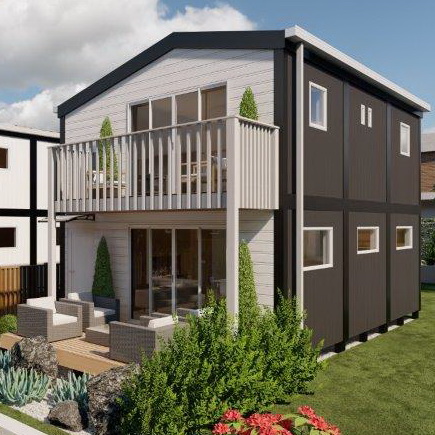
When you first see a floor plan, it can feel like you’re reading something written in an exotic language, leaving you feeling dazzled and wondering if building a new home is the next right path you should take. Fortunately for you, comprehending architectural designs may not be as difficult as it appears at first. FirstBuild has many plans available on its website.
A floor plan will provide you with a wealth of information about how the home will work and what your perception of it would be like when you live there. Floor plans are useful for explaining the home’s scale and layout, as well as how the rooms conform together and how the progression between them will function in practice.
You will receive a comprehensive PDF floor plan of the house you want to get an understanding of when you request an estimate for one of our designs. It will contain only a small fraction of information and is designed to communicate the design of a home to non-professionals. We’ve listed some of the hidden coded icons below to help you comprehend the ideas a little better.
Details of the house layout | Walls
The strongest visual features in a floor plan is the walls. Parallel lines symbolise walls, which might be solid or filled with a pattern. Doors, windows, and entrances between rooms are indicated by breaks in the walls.
- Exterior walls: Exterior walls are usually structural walls and are represented by a broad black line. These are usually the first walls to be erected, and they play a critical role in the structural stability of the home.
- Interior walls: When described in relation to outside walls, interior walls have a narrower line. Interior barriers are more likely to be relocated during the design process to help the owner create a more user-friendly environment.
Doors | House layout details
In floor designs, doors are situated within the wall breaks. There are a variety of door types available, which are typically chosen to suit the door’s intended usage as well as the space in which it is installed.
- Single door – a thin line opens up, forming an arc to show the swing direction.
- Double door- A double door has two arcs that represent the swing direction, similar to a single door.
- Sliding door – a sliding door is made up of two doors, one of which stays immobile while the other overlaps. These are commonly used to help with indoor-outdoor movement and are made of glass to allow more light in.
- Bi-folding doors- These are sliding doors that are made up of a succession of panels that fold in or out to create more room. Large glass panels are commonly used in bi-folds to allow a plethora of light in.
- Pocket door- A pocket door, also known as a cavity slider, is a sliding door that vanishes from view when fully opened into a compartment in the next wall.
- Double pocket door – Similar to the single pocket door, the double pocket door is useful when there isn’t enough room for a hinged door to swing open. They can traverse on rollers hung from an overhead track, as well as tracks or guides running down the floor.
- Arrows- These indicate the direction in which sliding doors and pocket doors slide.
Windows | House plan details
Windows are holes in the wall that are bridged by thin lines that display the glass and frame.
- Single casement window: This is a single moving window with one or more side hinges that connect it to its frame.
- Double casement windows: These have the same functionality as single casement windows, but they are fixed one on top of the other.
When visualising your new house design, it’s crucial to familiarise yourself with the positions of the doors and windows in the floor plan. Take the time to learn how they open, where they are located, and most importantly, how big they are. Visualize yourself in the home and discuss any adjustments you may want to make to window and door locations with one of our team members.
Flooring | House plan details
One of the most significant aspects of our homes is the flooring. It is even more critical to ensure that the kind of flooring chosen is appropriate for the given space. Perceiving the various flooring patterns in a floor plan provides you with a greater sense of scale as well as the regulatory needs for a particular space, such as waterproofing.
Designers tend to incorporate flooring materials into their floor plans to enable viewers to visualise how a room will feel by providing a better sense of scale.
- White space– This refers to a region that can be left as uncovered concrete, carpeted, or covered in floorboards.
- Wet area flooring- This is typically found in wet spaces such as bathrooms, laundry rooms, and, in certain situations, kitchens. To pass a code of compliance, this area will need to be properly put out using suitable materials.
- Exterior decking – This refers to the size of decking that the designer recommends. All of our decks are constructed after the prefab home has been installed.
Finishes, fittings, and furniture
To indicate the scale of the home, most businesses will include the position of sinks, toilets, bathtubs, beds, and other furnishings in their floor plans. Because skilled designers understand that perfect layout is important for plumbing, they pay close attention to where kitchens and bath fixtures are placed. The location and range of a refrigerator in regard to the sink and oven can impact whether a kitchen is easy or difficult to operate. Similarly, a toilet that is too close to the vanity can make a bathroom feel claustrophobic and unwelcoming. In a floor plan, key fixtures and appliances are quite easy to detect or figure out.
There is no standard for mattresses, sofas, or refrigerators, so measure your essential pieces of furniture and compare them to the designs to see if your California king bed or L-shaped sofa will fit! Should this become necessary, Genius Homes can look to build a distinct floor plan for you that includes these types of amenities.
Choosing the Correct Scale
One of the most appealing aspects of building a new home is the ability to customise the floor plans and design to meet your specific needs. One of the most significant factors to examine when comparing home plans in the early stages is the area of the floor plan or the plan’s magnitude. We can alter our house design plans to reflect the size of your master bedroom and ensuite if you already know how big you want them to be.
If you’re not sure about the scope of your plan, our team suggests grabbing a roll of masking tape and heading over to your sector to start laying out the plan. This will aid in determining the scale. Get a sense of your existing living situation as well. If your bedroom appears to be a little too small, take a tape measure and note this information before contacting our design team.
Imagine how the layout will feel and work when you’re doing the things that characterize your life when choosing the ideal floor plan. Fortunately for you, FirstBuild has a huge number of houses under construction in its Auckland Factory that potential clients can tour at any time. This is a terrific method for you to get a sense of the size of the houses and to determine what works and what doesn’t for you.
If you haven’t discovered a plan that meets all of your requirements, our staff can work with you to design a layout that is unique to you and your family’s needs.






